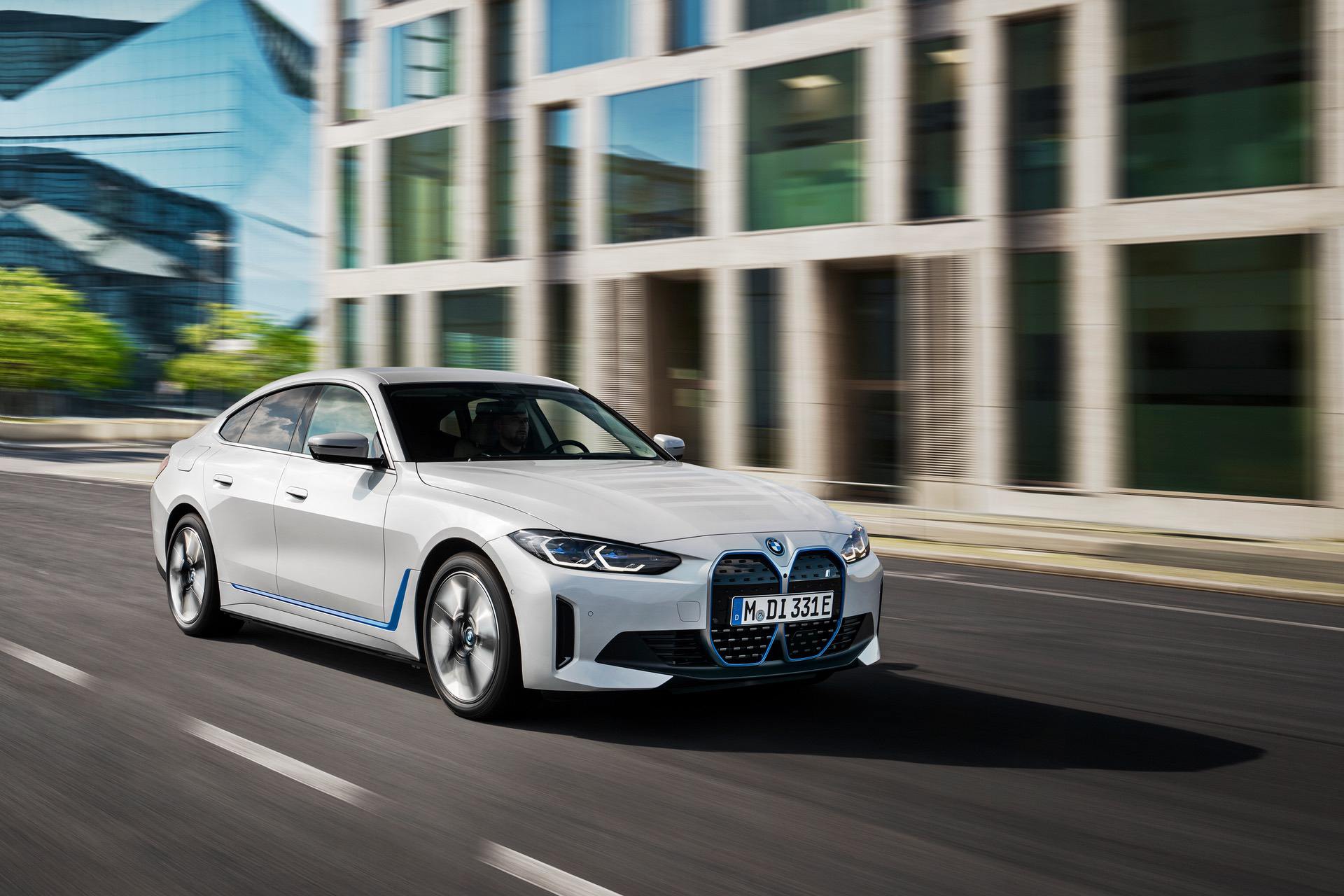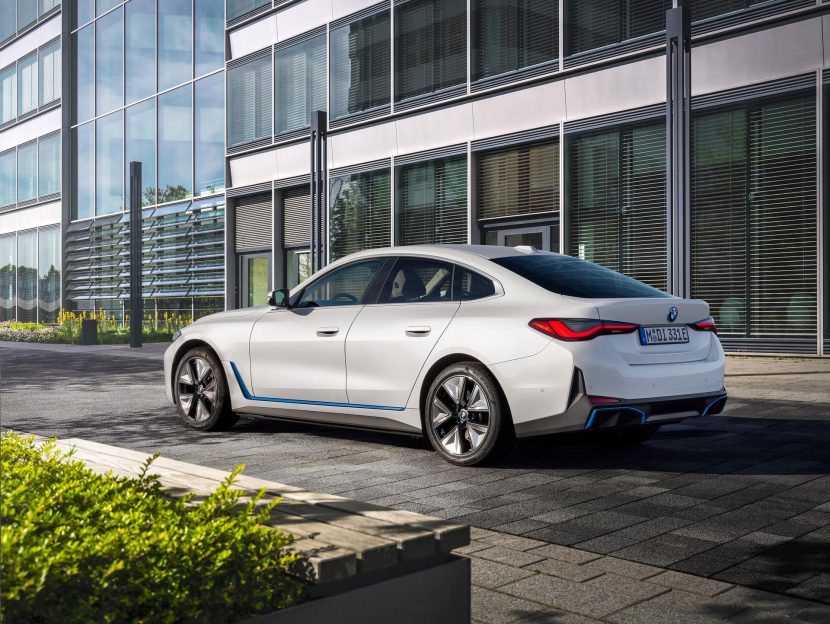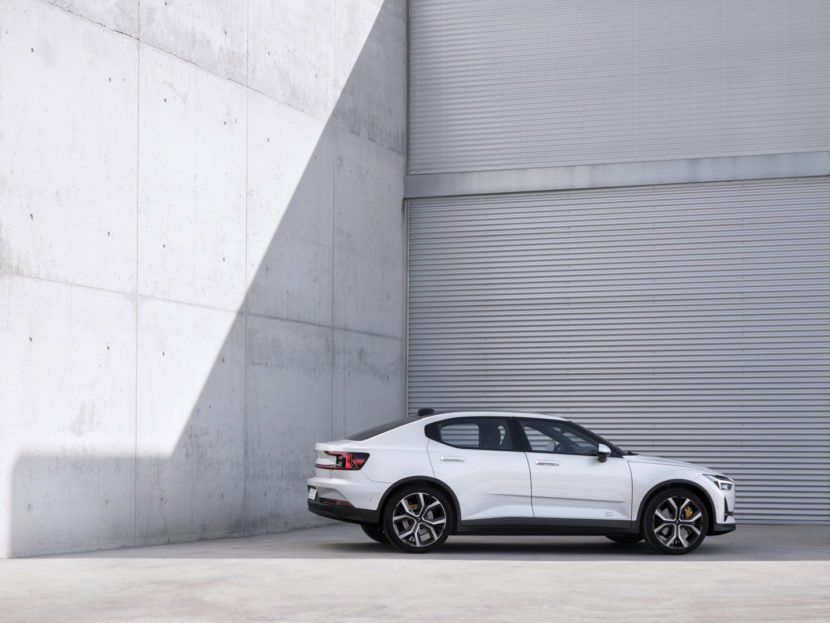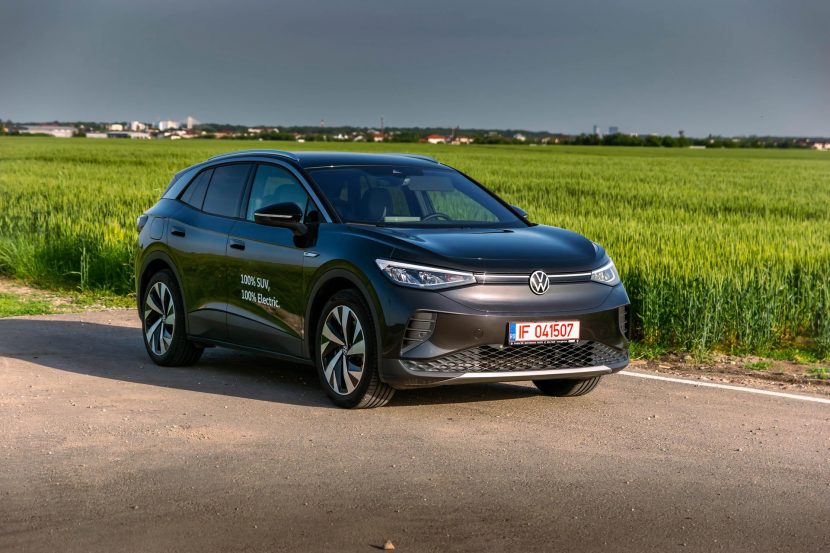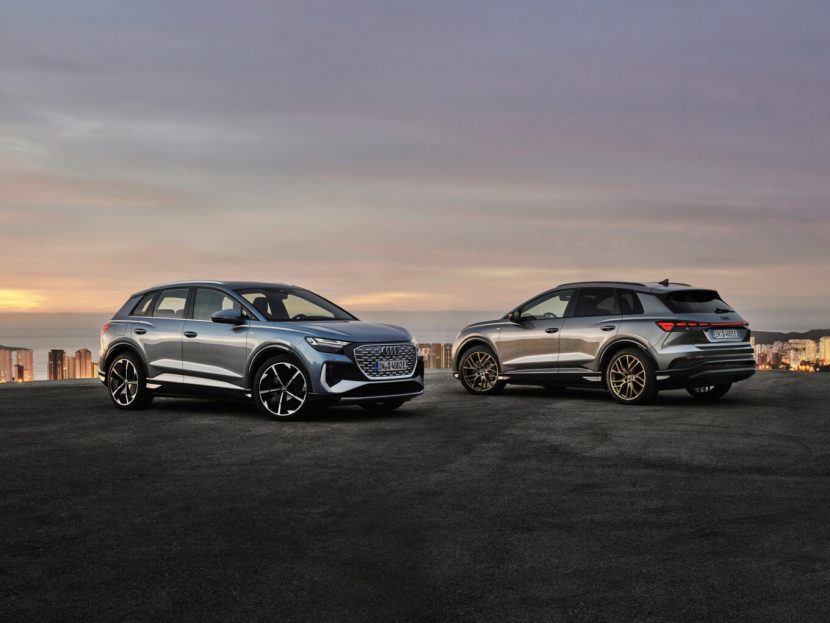When BMW first announced the BMW i4 40, it was met with some surprising optimism. Sure, it looks funky — thanks to its irradiated beaver styling — but its specs and price are quite encouraging. It’s absolutely in line with its competition, in terms of power, range, and cost. So let’s compare the BMW i4 40’s on-paper resume and see how it compares to the other EVs in the same price range.
Before we get started, let’s just get this out of the way; this isn’t going to be an exact apples-to-apples comparison for every car. Electric vehicles in the i4’s price range are not created equal; some are sedans, some are hatchbacks, some are crossovers. But because EV buyers have such a limited selection, they’re cross-shopping all of them. So even though it might not seem fair that a crossover gets bonus points over a sedan for its practicality, EV customers are going to weigh those factors when searching through their limited choice of EVs.
We’re also going to stick with entry-level prices and specs, as options and packages can be very different and difficult to compare. Since most EV customers’ main concern is always range anyway, we’re just gonna stick with the basics. Additionally, we’ll be using pre-destination prices and excluding any sort of government tax incentives, as some vary.
BMW i4 40
Let’s start with our titular vehicle, the BMW i4 40. The “40” model is the entry level i4 model and it packs a decent amount of power and range for its $55,400 starting price. For that money, you get a four-door sedan, with a hatchback trunk, and a single rear-mounted electric motor that packs 335 horsepower and 317 lb-ft of torque, getting it from 0-60 mph in a claimed 5.7 seconds. Sending the juice to that motor is a 81.5 kWh battery (83.9 kWh gross). Total range is 300 miles, according to BMW.
Tesla Model 3
Without question, the i4 40’s closest competitor is the Tesla Model 3. The entry-level Model 3 is called the “Standard Range Plus” and it comes with a starting price off $39,990. Don’t be fooled by Tesla’s shady marketing that claims it starts at $30,690, because that’s after Tesla factors in the maximum government tax breaks and “gas savings”, which is absurd because its actual starting price is actually very good, so there’s no need to be shady about it. For that money, you get a single rear-mounted motor with 221 horsepower, 302 lb-ft of torque, and a 0-60 mph of 5.3 seconds. Additionally, an 80.5 kWh net battery pack provides 262 miles of range.
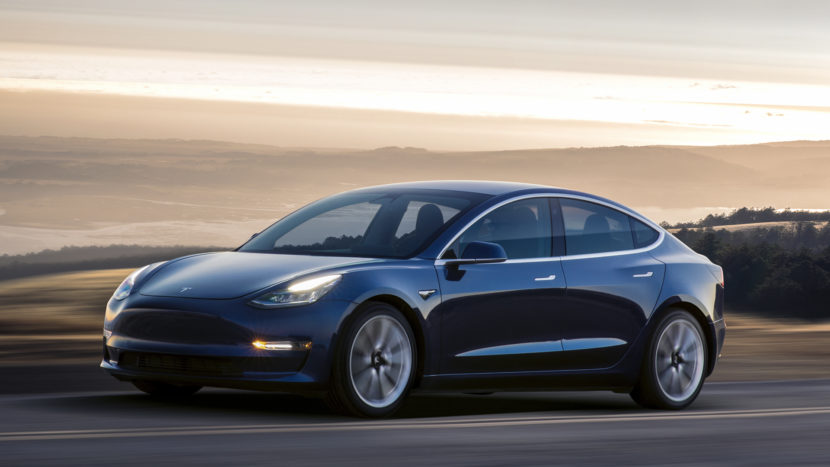
However, jumping up to the i4’s starting price, the Model 3 becomes either the Long Range ($49,990) or Performance ($56,990), both of which are quicker and boast longer ranges. The Model 3 Long Range gets 352 miles of range and a 4.2 seconds 0-60 mph time, while the Model 3 Performance gets 315 miles of range and around a 3.1 seconds 0-60 time.
Polestar 2
The Polestar 2 is an out-of-left-field choice but it’s still a good one and in the right price range. It starts at $45,900 and comes with a single front-mounted electric motor (which is unique in this list, as all other single-motor cars are rear-wheel drive), which makes 228 horsepower and 243 lb-ft. It has a range of 265 miles and gets from 0-60 mph in a claimed 7.0 seconds. Again, bumping the Polestar 2 to the same price point as the BMW nets you the dual-motor version ($51,200) that gets 402 horsepower, 487 lb-ft of torque, and a 4.5 seconds 0-60 mph time. Though, range drops to 249 miles.
Mustang Mach E
The Mustang Mach E has the benefit of being the first crossover on the list. It wears a starting price of $42,895 and for that you get a net 68 kWh battery pack and a single rear-mounted motor with 266 horsepower and 317 lb-ft of torque. According to Ford, the Mach E can reach 60 mph in 5.8 seconds and achieve 230 miles of range. However, it also has the added benefit of being a larger crossover, giving it more interior space.
Though, it you bump up to the California Route 1 model ($50,400), you get a few extra horses, 290 horsepower to be exact and a 305 mile range. Though, 0-60 drops to 6.1 seconds. The GT model ($59,900) is barely more than the BMW i4 40 (but still cheaper than the i4 50) and uses dual motors to make 480 horsepower and 600 lb-ft of torque, helping it hit 60 mph in 3.8 seconds. Though, it only gets 250 miles of range.
Volkswagen ID.4
BMW’s German rival from Wolfsburg brings its own EV crossover to the fight. The Volkswagen ID.4 starts at $39,995 and has a single rear-mounted electric motor, paired with an 77 kWh net battery pack. The motor makes 201 horsepower and 229 lb-ft of torque, getting the ID.4 from 0-60 mph in 7.9 seconds. It has a max range of 260 miles. The dual-motor all-wheel drive model is still cheaper than the i4 40 coming in at under $50,000, yet brings 295 horsepower, a range of 249 miles, and a 0-60 mph time of 5.7 seconds.
Audi Q4 e-tron
Very much like its Volkswagen sibling, the Audi Q4 e-tron uses a 77 kWh battery pack and a single rear-mounted motor to make 201 horsepower and 229 lb-ft of torque, so expect the same 0-60 mph time. It’s also said to have around 250 miles of range in its entry-level form. Audi says the entry-level Q4 e-tron will start at around $45,000. Expect the same dual-motor setup as the ID.4 as well, with pricing around $50,000.
Verdict
As you can see, the BMW i4 40 is the most expensive of the bunch by a rather large margin. While it’s likely the most premium of the bunch, that’s not a guarantee, as the Audi and Polestar are both lovely inside, and none of them are bad inside. However, what’s interesting is that most of the i4 40’s competitors can jump to dual-motor setups, with either better performance, more range, or both, for less money.
The BMW i4 40 looks like it’s going to be a very good car but it is going to be more expensive than its competitors. Will it be worth the price premium; based on its handling, interior tech, and premium cabin? We won’t know until we drive it. However, until then, the rest of the competition; specifically Tesla, Polestar, and the Mustang; look like very difficult cars to beat.


